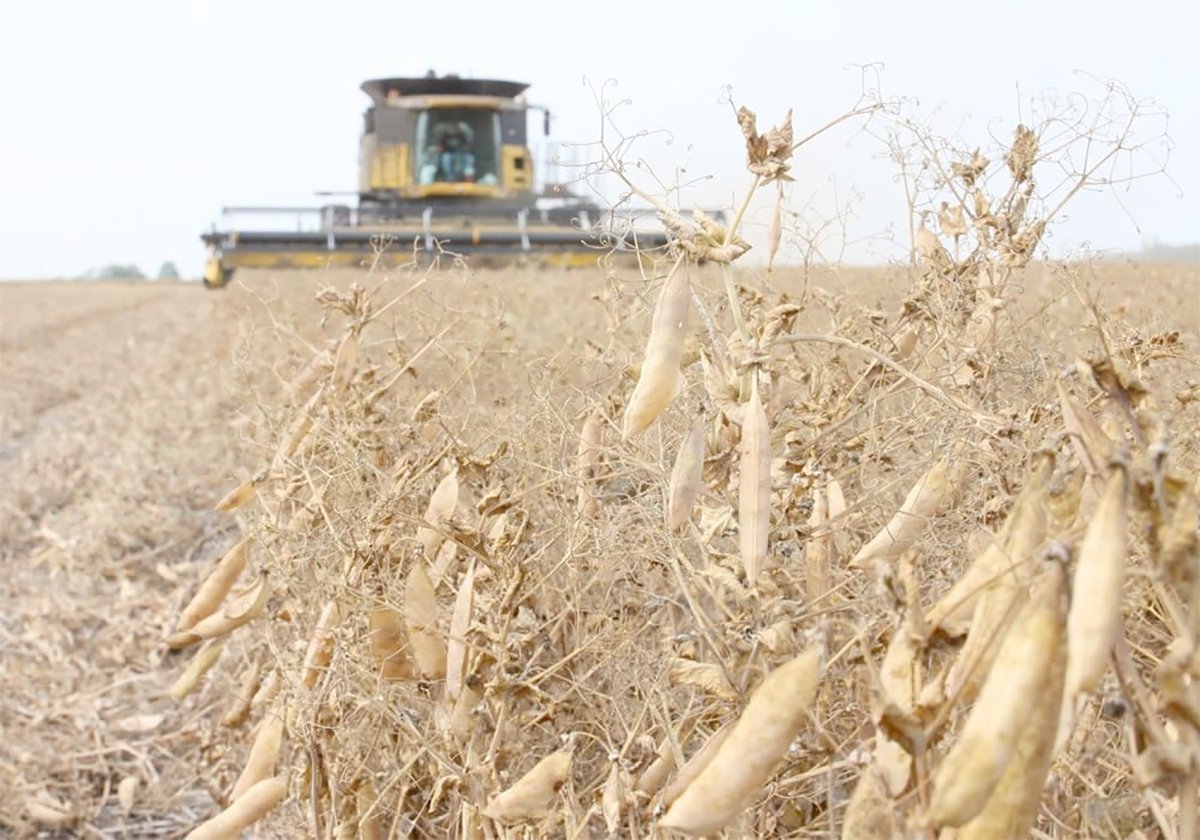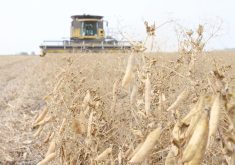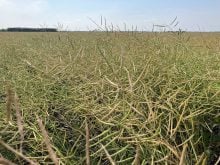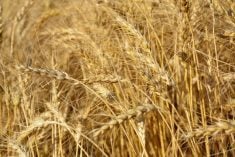Dan Tschetter cannot remember finishing harvest in August – until this year.
The field boss for the Peace View Hutterite Colony near Dawson Creek, B.C., said area producers usually run their machines into October and often November.
This year, however, dry, hot weather advanced crops and reduced yields significantly.
The colony’s canola yielded 12 bushels per acre, wheat 17 bu. per acre and barley 20 bu. per acre.
“It was a disaster,” he said, noting the 40 bu. per acre canola crop that the colony harvested last year.
Read Also

Chinese, Indian tariffs take toll on pea prices
The disruption of pea exports from Canada’s largest customers will likely result in slow pea exports for the remainder of the crop year.
Little rain and temperatures hovering near
30 C damaged the crops while hot winds burned off the canola blossoms.
Tschetter said it’s a similar story throughout the district.
“We’re all in the same boat,” he said. “We can’t do a thing about it. Our costs are still there and we don’t know how we’re going to pay.”
Tschetter said the colony will file insurance claims for its production shortfalls.
For now, its strategy is to remain positive and keep moving forward.
“There’s always next year, even if it looks grim.”
Peace River crops fared better closer to Fahler, Alta., where average yields are expected.
Karen Skarberg of EFD Ventures, an Esso retailer in Peace River, Alta., said crops are shorter than normal and will yield average to below average volumes.
She said the area had a dry spring this year, which was followed by as much as three weeks of steady rain that drowned crops.
“It was a roller-coaster of weather that put a lot of stress on the crops,” she said.
Skarberg said farmers who seed early are usually caught with a frost or snow, but this year it stayed dry until the rain in May, which dumped as much as 175 millimetres in some areas.
Major flower blasting also occurred in canola in July’s heat.
Harvest is close to completion on many cereals in the district. Producers who have moved onto canola fields are finding poor swaths from plants that failed to pod out properly, she said.
Gilbert Goudreau, manager of adjusting services with Agriculture Financial Services Corp., expects to see production shortage claims from about 20 percent of insured acres in the Peace region this fall.
While yields are down, quality appears to be up, he noted, citing grades of No. 1 and 2 from an area that has produced a lot of feed in recent years.
Goudreau said Alberta producers have 15 days to file their claims following completion of harvest. He expects to start receiving those claims by mid-September.
Harvest is generally ahead of schedule on the Prairies this year, in part because of the rapid advancement of crops this hot summer. The heat has reduced a once promising bumper crop to an average one in most areas.














